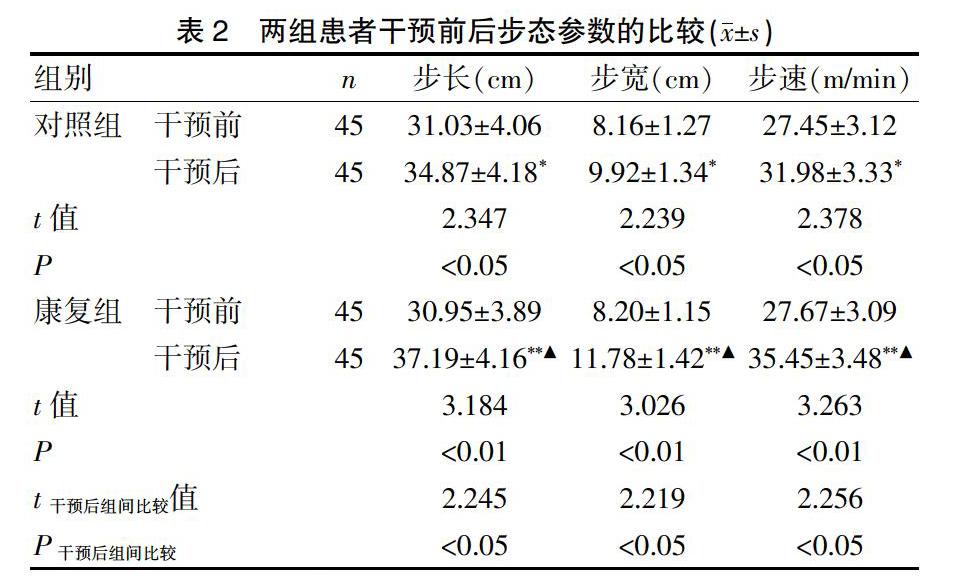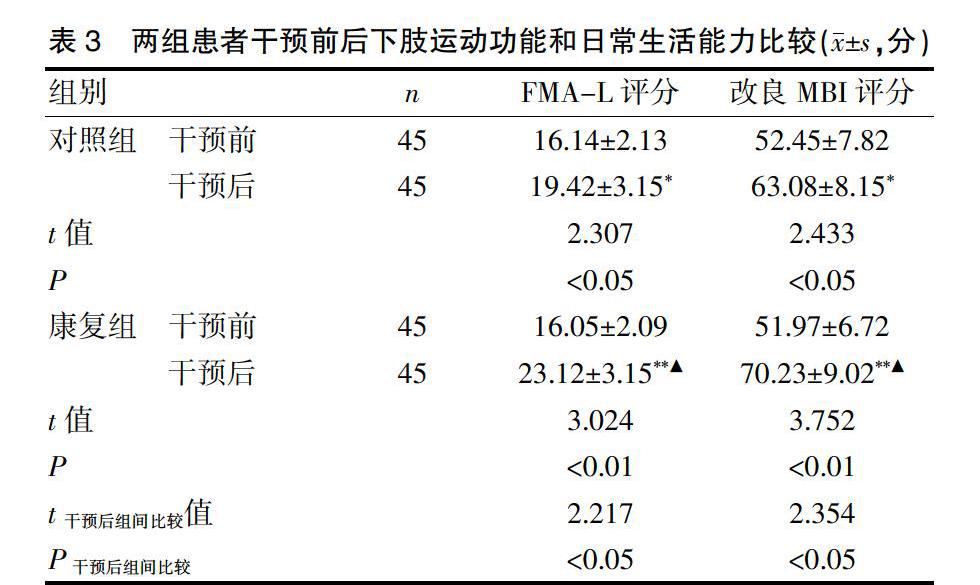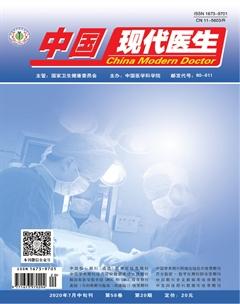绳带疗法对脑卒中后偏瘫患者异常步态和下肢功能改善作用
周慧青 王传敏 俞建松



[摘要] 目的 探讨绳带疗法对脑卒中后偏瘫患者异常步态和下肢功能的改善作用。 方法 选择2018年4月~2019年4月期间我院康复科进行康复治疗的脑卒中后偏瘫患者90例,采用抛银币法分为康复组与对照组,各45例。两组患者均酌情予控制颅内压、血压、血糖和血脂,营养神经细胞及预防并发症等常规治疗。对照组患者予以常规康复训练方法,康复组患者在对照组基础上加用绳带疗法。两组均干预8周。评估两组患者干预前后步态参数(步长、步宽和步速)、下肢运动功能及日常生活能力的变化。 结果 干预8周后,两组患者平均步长、步宽和步速较前明显升高(P<0.05或P<0.01),且康复组升高幅度较对照组更明显(P<0.05);两组患者FMA-L评分和改良MBI评分较前明显升高(P<0.05或P<0.01),且康复组升高幅度较对照组更明显(P<0.05)。 结论 绳带疗法用于脑卒中后偏瘫患者不仅可有效改善患者异常步态,而且可明显改善患者下肢功能,提高其日常生活能力。
[关键词] 脑卒中后偏瘫;绳带疗法;异常步态;下肢运动功能
[Abstract] Objective To explore the improvement effect of rope therapy on abnormal gait and lower limb function in patients with post-stroke hemiplegia. Methods 90 patients with post-stroke hemiplegia who were undergoing rehabilitation treatment in the rehabilitation department of our hospital from April 2018 to April 2019 were selected. The patients were divided into the rehabilitation group and the control group by the coin flipping method, with 45 patients in each group. Patients in both groups were given routine treatments such as control of intracranial pressure, blood pressure, blood glucose and blood lipids, nutritional nerve cells and prevention of complications. Patients in the control group were given conventional rehabilitation training methods. Patients in the rehabilitation group were given rope therapy on the basis of the control group. Both groups were intervened for 8 weeks. Changes in gait parameters (step length, step width, and pace), lower limb motor function, and daily living ability were evaluated before and after intervention in both groups of patients. Results After 8 weeks of intervention, the average step length, step width, and pace in both groups were significantly higher than before (P<0.05 or P<0.01), and the improvement in the rehabilitation group was more significant than that in the control group (P<0.05); the FMA-L score and modified MBI score in both groups were significantly higher than before (P<0.05 or P<0.01), and the increase in the rehabilitation group was more significant than that in the control group (P<0.05). Conclusion Rope therapy for patients with post-stroke hemiplegia can not only effectively improve the abnormal gait of patients, but also significantly improve the lower limb function and enhance patients' ability of daily living.
[Key words] Post-stroke hemiplegia; Rope therapy; Abnormal gait; Lower limb motor function
腦卒中是老年患者常见神经系统疾病,可引起患者中枢神经系统受损,治疗后患者往往遗留肌痉挛、姿势控制差等运动功能异常,导致步行功能障碍,影响其日常生活活动能力[1,2]。以往对脑卒中后偏瘫常采用物理治疗、运动疗法、作业治疗等多种方法进行治疗,但临床疗效相对较有限[3,4]。绳带疗法是利用有弹性绷带缠绕于患者肢体的不同部位,起到改善患者运动控制能力的一种康复训练方法,对纠正脑卒中后偏瘫患者异常步态具有一定的较好效果[5,6]。本研究观察了绳带疗法对脑卒中后偏瘫患者异常步态和下肢功能的改善作用,现报道如下。

